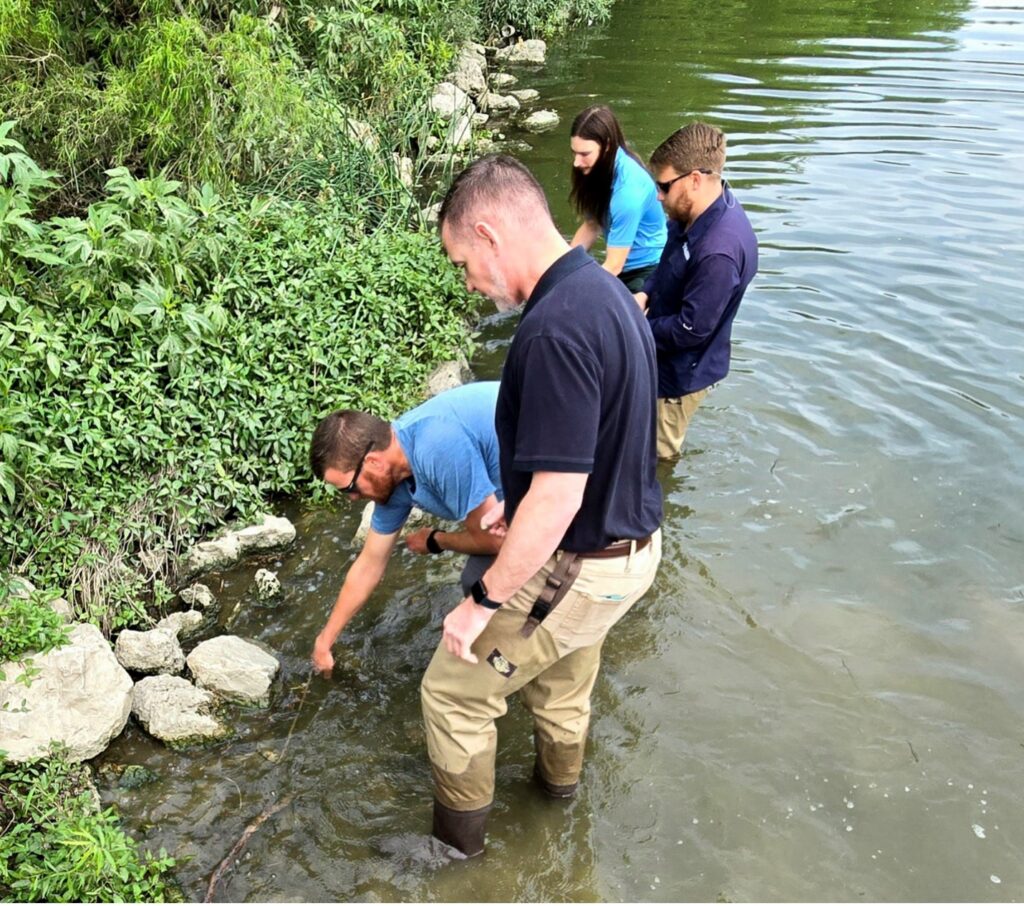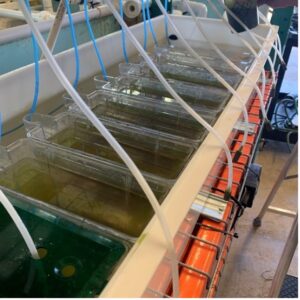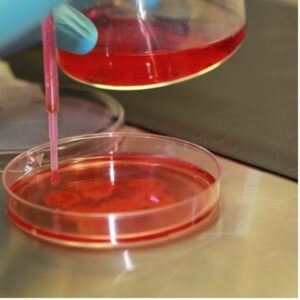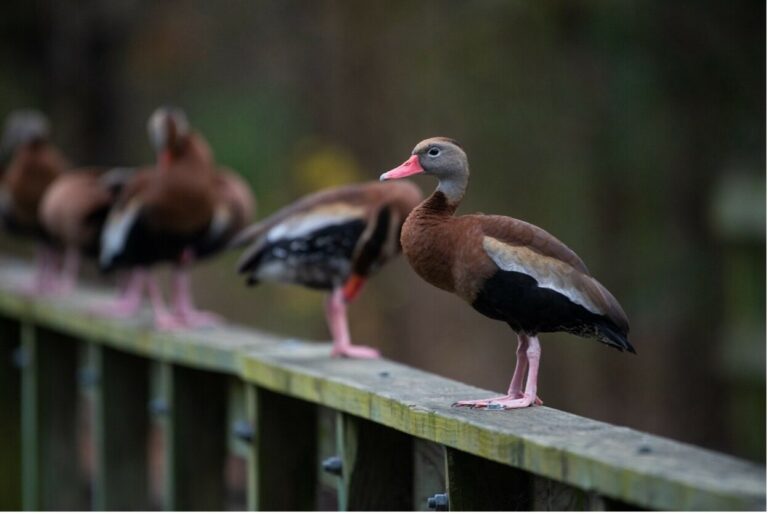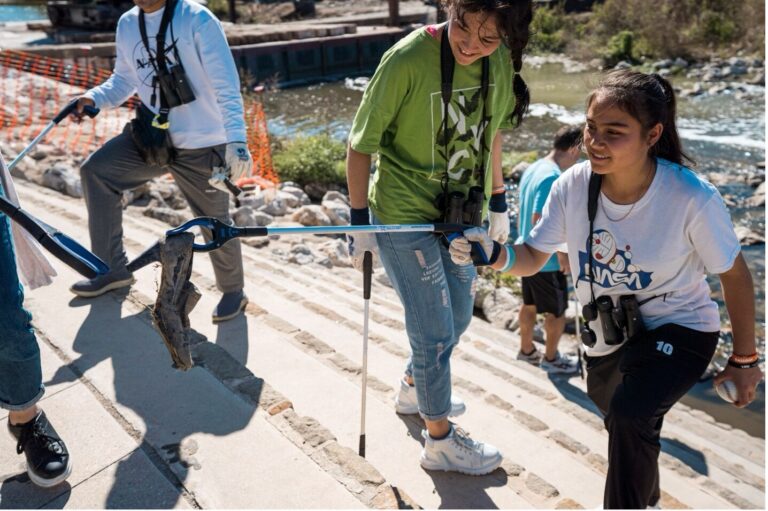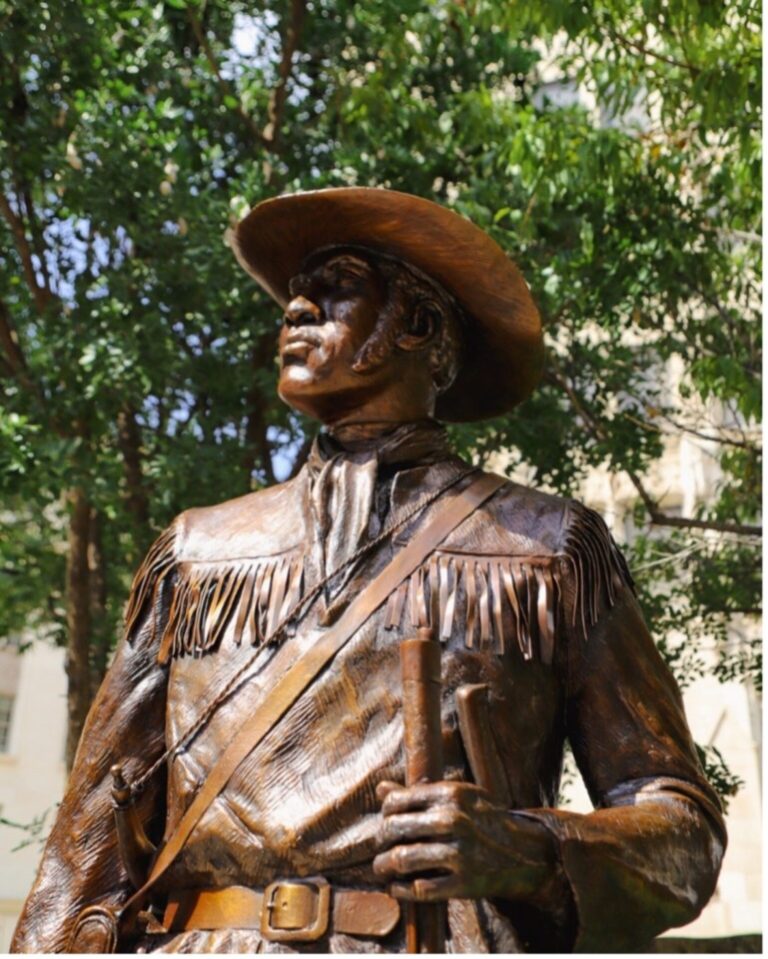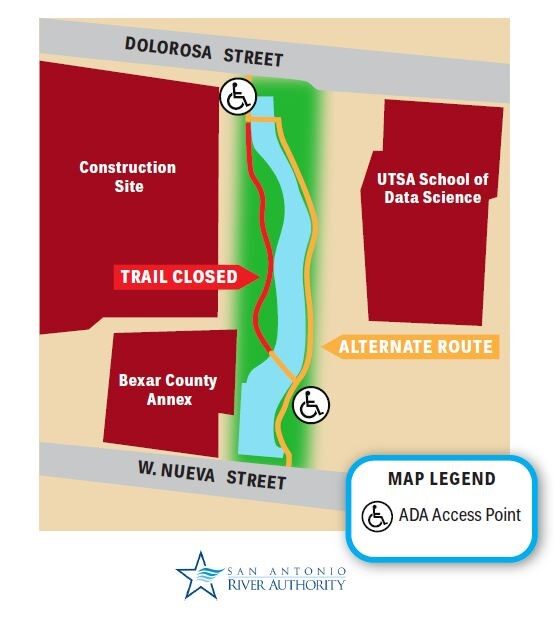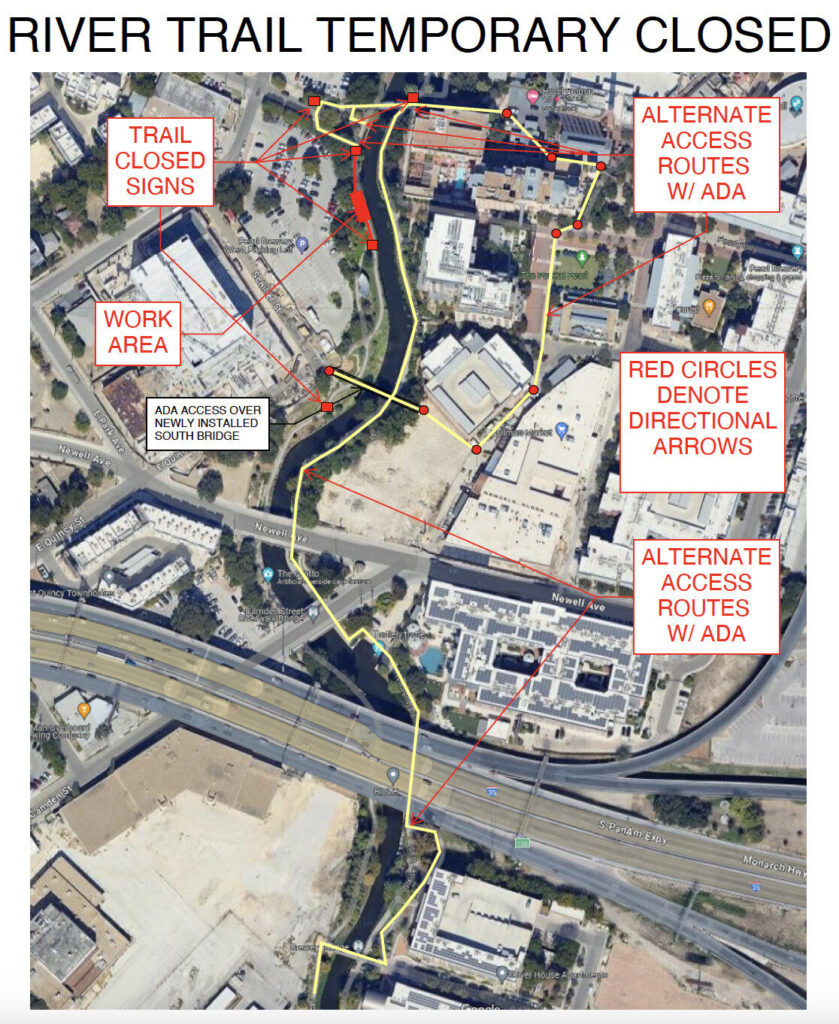Last Updated on May 23, 2024
On Friday, May 17th, the San Antonio River Authority (River Authority) and U.S. Fish and Wildlife Service (USFWS) kicked off a first-of-its-kind conservation effort aimed at restoring the health and biodiversity of the San Antonio River Basin by reintroducing freshwater mussels to waterways in the area.
River Authority scientists will reintroduce approximately five thousand freshwater mussels that will act as the “liver of the river” by keeping waterways free of harmful bacteria. The first conservation effort of its kind in Texas, this initiative marks a significant milestone in the River Authority’s mission to preserve and enhance the San Antonio River Basin for generations to come.
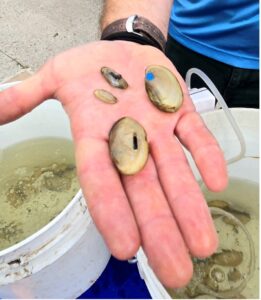
“We have a number of different spots throughout the river that we know are healthy for these mussels to come into — or to live in,” said River Authority Environmental Sciences Manager Shaun Donovan. “The water quality in the river is so good that mussels can live here. And so, while mussels will improve water quality, we wouldn’t be here today if the water quality wasn’t already good.”
Special guests at the event included River Authority staff, Jim Campbell, Board Chair of the River Authority, Amy Lueders Regional Director of USFWS, Jeff Conway, Reintroduction Project Manager of USFWS, Bailey Gaines, Jacqualyn Halmbacher, and Tommy Funk project delivery staff at Inks Dam National Fish Hatchery (IDNFH), Megan DiNicola and Belize Lane with Utah State University, the Meadows Center for Water and the Environment staff for their help with the habitat suitability model, Texas Parks and Wildlife and our friends at Guadalupe Blanco River Authority.
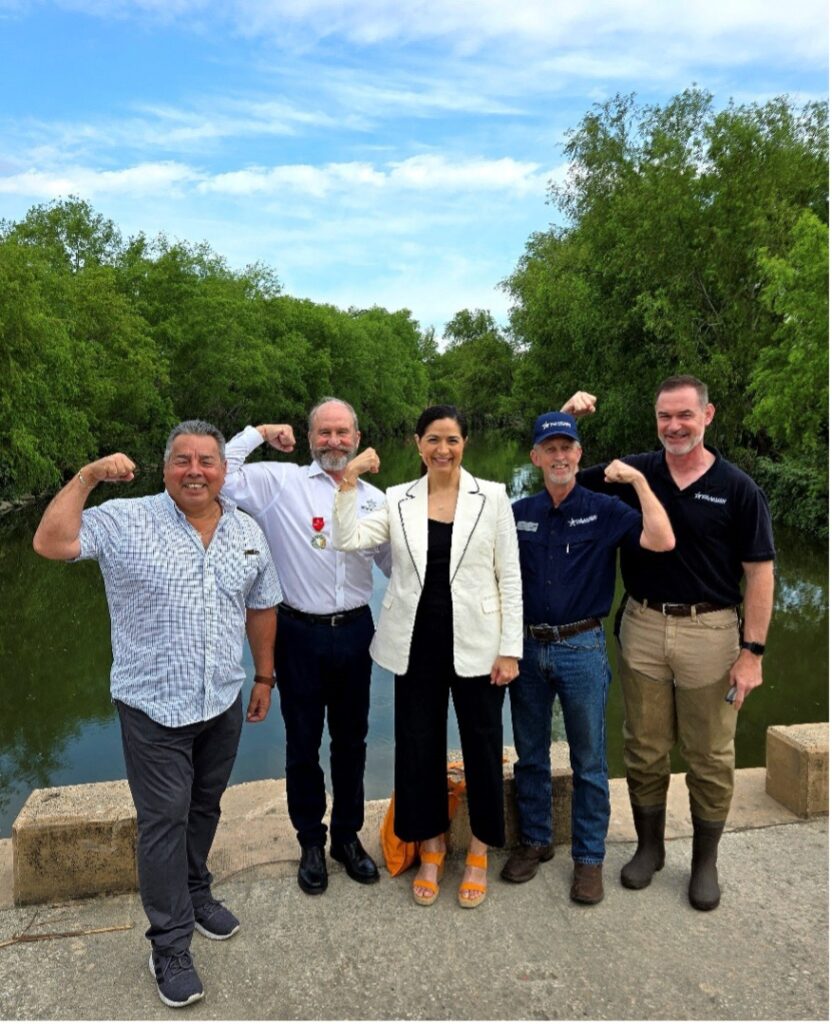
“As stewards of the San Antonio River Basin, the River Authority recognizes the importance of conserving and restoring freshwater mussel populations for the benefit of both our environment and our communities,” said Jim Campbell, Board Chair of the River Authority. “Through collaboration with national organizations like the U.S. Fish and Wildlife Service we are able to pioneer scientific research and conservation efforts that will help safeguard the natural heritage of our region.”
Why were Mussels Reintroduced to the River?
According to the United States Geological Survey (USGS), freshwater mussels are the most at-risk group of animals in North America with over 66% of species facing decline. In the face of potential regulatory pressures, the River Authority began investigating the state of the freshwater mussel community within the San Antonio River basin around 2014. After several years of surveys throughout the river basin and additional scientific investigation through outside agencies, it was determined that there were no threatened or endangered freshwater mussel species in the San Antonio River Basin. This was good news from a regulatory compliance perspective; however, it did not curtail the River Authority’s drive to further understand and advocate for these animals. The River Authority was seeing successes with the recently restored Mission Reach—from improved riparian vegetation to avian, fish, and macroinvertebrate communities. However, diverse native mussel communities haven’t been present within the upper San Antonio River in recent decades due to increased urbanization and channelization. The improvement in other biological communities in the Mission Reach led River Authority biologists to begin pursuing the reintroduction of native freshwater mussels.
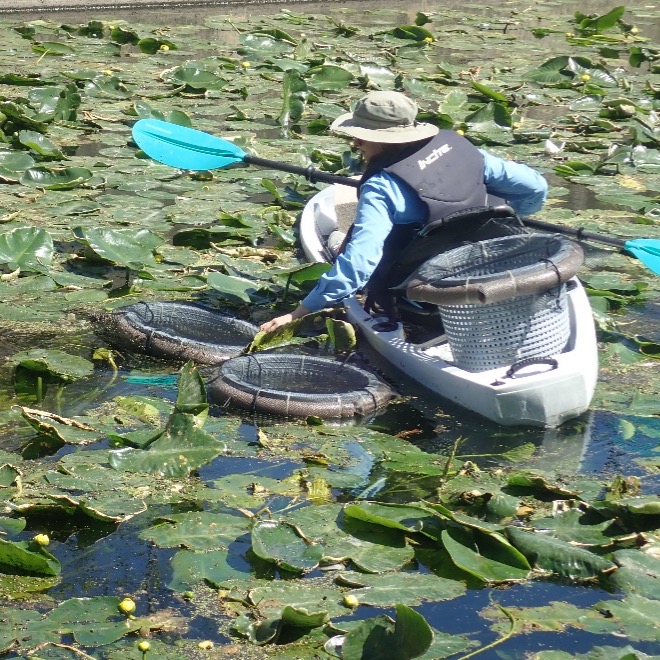
A River Authority biologist deploys freshwater mussel floating baskets in the San Antonio River in 2022.
The first steps toward a reintroduction were taken in 2017 with the Mission Reach Mussel Survivability Study, which showed that adult mussels were able to survive and thrive in the face of an urbanized environment. Subsequently, a variety of studies were initiated to investigate any potential impediments to mussel survival and reproduction. A partnership with a USFWS station at IDNFH was initiated to propagate juvenile mussels.
Left: Pipetting mussels to the in vitro culture dishes Right: Holding tanks for drop-off and juvenile mussels—Photos Courtesy USFWS
Alongside these efforts, the River Authority’s aquatic biologists initiated the Mission Reach Intensive Nekton Survey to identify the fish recolonization of the Mission Reach of the San Antonio River. Through this effort, staff were able to identify a multitude of host fish necessary for successful freshwater mussel reproduction. Researchers at Texas A&M University have been partners in furthering our understanding of mussel/fish interactions and will aid in informing future management of the reintroduction.
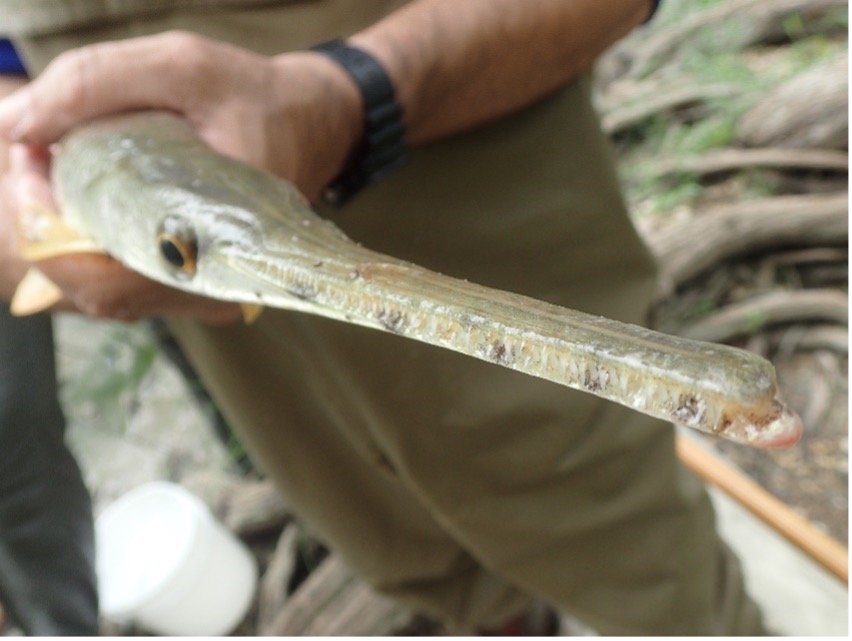
Longnose gars, like the one pictured above, are an important host fish species for mussels—read more about how these are important to a mussel’s life cycle!
The final study of the reintroduction project was the development of a habitat suitability model to assist in guiding where River Authority staff placed mussels within the river. This initial modelling effort was in collaboration with U.S. Army Corps of Engineers, Utah State University, Texas State University, and Texas Parks and Wildlife. This effort concluded in 2024, though future modeling will be integral in the long-term success of the reintroduction.
What’s Next?
The job isn’t finished now that the mussels are placed in the water—biologists at the River Authority will be busy tracking the successes of this reintroduction through a mark-recapture study utilizing PIT (passive integrated transponder) tags glued to the outside of a mussel shell. These tagged mussels will be placed in the river and found again over time. The data gathered from this type of study will shed light on the survival and stability of these newly reintroduced populations. River Authority scientists have also started to investigate the impacts of stormwater runoff on juvenile mussels, as well as an investigation of the genetic makeup of the mussel communities within the San Antonio River Basin.
River Authority staff will continue working with Inks Dam National Fish Hatchery to produce additional species to stock in the Mission Reach. The initial stocking will be of Yellow Sandshell (Lampsilis teres), however, staff is working on propagating three additional species to stock in the Mission Reach in the near future.
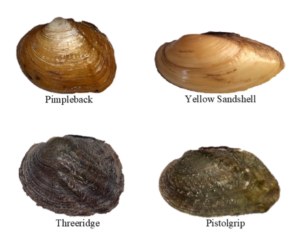
Above: The four freshwater mussel species studies in the Mussel Reintroduction Project.
Additionally, continuous updating of the habitat suitability model is necessary for successful stocking of mussels and River Authority staff will be working on refining the model over the coming years as conditions continue to change. This initial reintroduction event is a massive milestone that the River Authority is immensely proud of, and we look forward to contributing to the ongoing effort to conserve these animals and continue providing a healthy river for our community.

